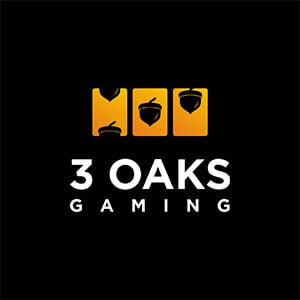ow important is omni-channel and how should it be implemented into a gaming firm’s marketing? An expert ICE panel addresses the issues
THE PANEL
Gerhard Burda Chief Product Officer, Inspired Gaming Group
Claire Barry Head of Digital Planning and Strategy, Camelot
Ciara NicLiam Head of Casino and Games, Rank Group PLC
Nikolaos Papadoglou Group Director, Product Management and Planning, Intralot
Moderato: Sean Keogh Platform Director, Mybet
At last month’s ICE Totally Gaming show, virtually every firm out there was talking about having or moving to an ‘omni-channel’ approach.
But what does that actually mean? And how does it impact marketing strategy? Four experts from across the industry came together at the Cross-Platform and Multi-Channel Gaming conference to reveal all as part of a panel discussion entitled: Is there a disadvantage of not being an omni-channel company?
Is being omni-channel something companies actually need? Are there significant numbers of customers who want to interact with brands in multiple ways or are we talking about a niche group?
CB: We definitely see that there is a demand for customers to interact with us in retail and interactively, though not necessarily to do the same thing. An important part of playing the lottery is the ability to check the results afterwards. We find that a big proportion of our retail customers who are downloading the app or go onto the website do so to see the results but don’t feel the need to play, because they’d rather do that in a retail environment.
CN: Looking at Grosvenor Casinos alone, we have 56 land-based casinos in the UK market, where 1.7 million unique customers walked through the door last financial year. We know from talking to the customers that about 45% of those customers are playing online as well, but not with us. For the casinos it’s about engaging your retail base and awareness.
In a gaming environment there are plenty of things we can do to make sure our retail base is being driven online. For me omni-channel means being available for whenever and wherever your customers want to interact with your brand, be it retail, tablet, desktop – from tapping into the core customer contact centre and knowing the recent bonus you got through to what the specials are going to be in the restaurant of your local casino that night.
NP: I think the discussion surrounding omni-channel came about when mobile took off in the online world and retail. The user wanted to experience something different on mobile from a retail store, and their habits are different when they are sitting online at a desktop and totally different when they are using a phone which is just an extension of your hand. But even so you want to keep the brand coherent, and how you do that is the issue everyone is talking about.
Is the switch to omni-channel a conscious decision? Is everyone completely on board with omni-channel strategies?
GB: I think so because we know that omni-channel users are real. From research we see about 20% of all players are truly playing in an omni-channel way, and we know that those are very good players that we don’t want to lose.
But a truly omni-channel strategy means having completely integrated technology, and that is the challenge. Right now we are still fragmented with the various systems we have and how they are linked into each other, such as promotions, which also need an omni-channel approach.
There are companies out there that claim they have complete integration, but I think nobody is really there at the moment.
Is there a case to be made in regards to being sceptical about omni-channel strategies? Is it only going to work in certain situations?
CB: I’m not sceptical, but I do think sometimes it can be slightly prohibitive to be digital and retail when you have two different back ends and two markets, and you would like to launch something new, such as physical scratchcards in the shops and a game online or in a mobile environment. There is a lot more to do and consider. Lead times in shops are very different compared to what you need to do in a digital environment. How that opportunity may present itself to the consumer is very different as well. Scratching something on a piece of paper might be very different to playing a game in a digital environment, so how you’re selling that experience is quite important and it’s not always going to be the same message. So it’s not negative but it needs more thought.
Should you apply online marketing techniques to your omni-channel retail customers?
CN: Yes. Historically, we made all our customers register but we had no idea what they did once they walked through the door – whether they sat in the corner and had a few drinks, went for dinner or played blackjack or roulette. The way we were able to combat that was with a loyalty scheme. Customers now log in with what they’re doing once they’ve got a membership card and we give you loyalty points for every pound you spend, and we can see if that’s in the bar or table gaming. That enabled us to be able to reach out to customers. In the retail space we do email, we do SMS but we also do a lot of direct mail out.
But what we’re not doing is saying: “You recently walked through the doors of one of our casinos, come to our blackjack tournament”, when we don’t even know if the customer knows what blackjack is or how to play it.
NP: The challenge is omni-channel is in its early infancy in this industry. You have different groups of customers. The millennials and under 25s really don’t see the reason to walk into a retail shop and buy a lottery ticket, but you’ve also got those customers who we can target with loyalty schemes and crossover marketing campaigns.
We have seen from customer insight that there are people who post their life into the online world, when they register with you they share everything, and then they walk into a retail store and the minute you ask them their name they become defensive and want to know why you are asking.
The challenge for us as a company is to bring online technology into retail when we don’t know the customer. We have vending machines for example that need age verification which we can’t get when the customer doesn’t want to tell you who he is. This is the challenge for everyone in the industry, to try to bridge that gap between ages and different habits that exist between traditional retail and online consumers.
There is a technical challenge clearly in terms of trying to get the systems within an omni-channel presence to work together. But there is also a challenge of corporate structure. How do we deal with this?
GB: There have been times where we have struggled to sync. Why should the mobile guy wait for the retail guy to be ready to launch a new product, just so that we can sync up the launch? But it’s not a human thing, it’s a corporate thing. If you have to deliver results every quarter you don’t have the time to think about what the other channels need to do to overcome their own challenges. It’s too much pressure.
CN: This is where things like propensity modelling and real data analytics come into it. For us as a brand, those who play live and online are worth quite a lot of money. It’s about brand first and customers first – you’re going to the right customers with the right message at the right time. It has to be about respect for the customer – I’m not going to ask the CRM team to email everyone who has ever walked through our door digitally and in retail with the same special offer, because if you lose that respect they will go and play elsewhere.
Is there a need to differentiate game design and product in different channels?
GB: There are different philosophies on this, and I have my own personal belief. You want the same brand, which is crucial, that you can build and support, but does that mean actual game mechanics stays the same? Personally I doubt it. But there are other people who say that it absolutely has to be the same. I doubt it because of the players’ behaviours being so different.
We have one good example in Inspired in 2015, where the same maths and the same game in both digital and land-based worked extremely well. But on the other hand there is a philosophy out there that in the tech world bonus games work better, whereas in the retail world free spin games work better. When mobile started to become so strong the industry was in a place of just ‘throw stuff up and see what sticks’, and we are now slowly but surely getting to a point of more analysis, building brands and bespoke games.
Channelling the way ahead
H
By Gambling Insider
Premium+ Connections
Premium Connections
Awards
Consultancy
Executive Profiles
Mohegan Inspire
GAN
DraftKings
The Star Entertainment Group
Entain
Follow Us
Company profile: Growe Partners
Dominate the Sports Betting Affiliate Arena with Growe Partn...Company profile: GR8 Tech
The sportsbook provider discusses turning sportsbooks into a...Analysing sports betting data from the African Cup of Nations 2024
Sports betting supplier Betby provides Gambling Insider with...LiveScore Group: Football’s changing relationship with fans
Gambling Insider delves deeper into LiveScore’s Evolution...9 April, 2024
A new trend: Why are gaming companies going private?
9 April, 2024
Wazdan CEO: Engineering success in gaming
27 March, 2024
Gaming in North America: The litigation nation?
17 April, 2024




































